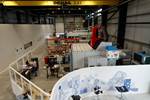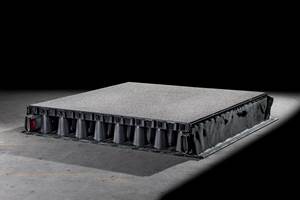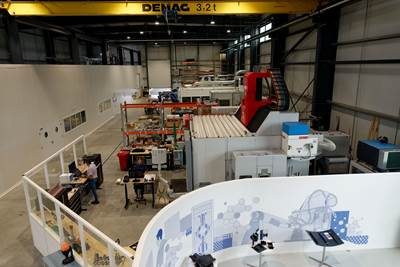Notes from JEC Europe 2015: Known knowns, known unknowns and unknown unknowns
The composites industry’s largest trade show, JEC Europe, was held March 10-12 in Paris. CW's editor-in-chief Jeff Sloan offers his just-back-from-the-show assessment.
The composites industry’s largest trade show, JEC Europe, was held March 10-12 in Paris. It was, as usual, big and busy and full of not only innovative technologies but rumors, hearsay and speculation. CW was there, as usual, to cover the event. Our initial report is in the News section on the CW Web site, and a distillation will appear in the May 2015 issue of ÂÌñÏ×ÆÞ. In the meantime, here’s my week-old assessment.
Known knowns
There was the usual assortment of high-end automobiles on hand to demonstrate exhibitors’ composites capabilities. Yet the big question on many lips was: Will composites take off in automotive? And if so, when? The consistent answers were: Yes and 2020-2025. The thinking seems to be that automakers and their Tier 1 suppliers are in the midst of sorting out resin, fiber, processing and application options, with an eye toward implementation in the early part of the next decade. This makes sense, given some of the big questions that must be answered by automakers, and none is bigger than that of carbon fiber supply. If an automaker decides to apply carbon fiber to a vehicle on the same scale as BMW has with the i3, fiber supply must be guaranteed. Establishing that guarantee is no small task and might require an automaker to establish a partnership of the type BMW created with SGL Group. Meanwhile, many resin and machinery suppliers appear to be developing and proving new fast-curing/short-cycle technologies that they hope will soon find a home in a high-volume automotive manufacturing environment. So, mark your calendar for 2020-2025, but you’d better use a pencil.
Known unknowns
There was also a healthy collection of aerospace parts, but after a decade-plus run developing materials and equipment for four very large aerospace programs (Airbus A380, Boeing 787, Airbus A350 XWB, Boeing 777X), many major suppliers to the all-important aerospace industry appear to be asking the same question: Now what? Aircraft programs consumed much attention and resources for a very long time — so long, in fact, that the largesse had become the status quo. However, with the A350 XWB now in service, the supply chains for these programs have been indefinitely fixed. Even the supply chain for the re-winging of the 777X, which will feature carbon fiber composites, is established and locked down. Although there are a few aero programs on the margins that offer nice work packages (i.e., Sikorsky’s CH-53K, Bombardier CSeries, Irkut’s MS-21, etc.), there is no major aero program on the horizon. Beyond the horizon, lurking, are the redesigns of the Airbus A320 and Boeing 737, but the year most frequently associated with those programs is 2030. And where and how composites might be used on these single-aisle aircraft is still an open question.
Unknown unknowns
One under-appreciated feature of the composites industry is its highly dynamic nature. As someone who came from outside the industry, I understand well that the mix of resin, fiber, tooling and manufacturing processes employed by composites fabricators almost guarantees rapid innovation and fast change. This means that there are composites applications still in their infancy, or yet to come to life, that could one day become dominant — or more dominant. Offshore wind blades, pressure vessels, and oil and gas structures spring to mind.
If JEC is a snapshot of the health of the composites industry, it must be pronounced robust and growing, still in the throes of adolescence but with a promising future ahead.
Related Content
Sulapac introduces Sulapac Flow 1.7 to replace PLA, ABS and PP in FDM, FGF
Available as filament and granules for extrusion, new wood composite matches properties yet is compostable, eliminates microplastics and reduces carbon footprint.
Read MoreLow-cost, efficient CFRP anisogrid lattice structures
CIRA uses patented parallel winding, dry fiber, silicone tooling and resin infusion to cut labor for lightweight, heavily loaded space applications.
Read MorePlant tour: Airbus, Illescas, Spain
Airbus’ Illescas facility, featuring highly automated composites processes for the A350 lower wing cover and one-piece Section 19 fuselage barrels, works toward production ramp-ups and next-generation aircraft.
Read MoreCirculinQ: Glass fiber, recycled plastic turn paving into climate solutions
Durable, modular paving system from recycled composite filters, collects, infiltrates stormwater to reduce flooding and recharge local aquifers.
Read MoreRead Next
Assembling the Multifunctional Fuselage Demonstrator: The final welds
Building the all-thermoplastic composite fuselage demonstrator comes to an end with continuous ultrasonic welding of the RH longitudinal fuselage joint and resistance welding for coupling of the fuselage frames across the upper and lower halves.
Read More“Structured air” TPS safeguards composite structures
Powered by an 85% air/15% pure polyimide aerogel, Blueshift’s novel material system protects structures during transient thermal events from -200°C to beyond 2400°C for rockets, battery boxes and more.
Read MorePlant tour: Daher Shap’in TechCenter and composites production plant, Saint-Aignan-de-Grandlieu, France
Co-located R&D and production advance OOA thermosets, thermoplastics, welding, recycling and digital technologies for faster processing and certification of lighter, more sustainable composites.
Read More












